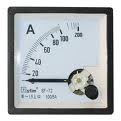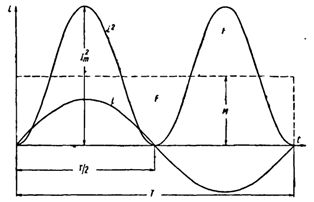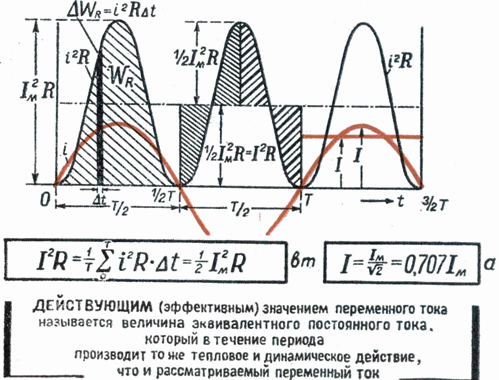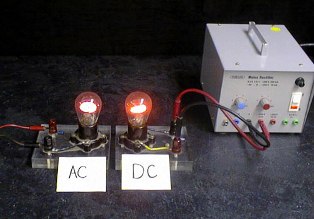RMS values of current and voltage
 The alternating sinusoidal current has different instantaneous values during the period. It is natural to ask the question, what value of current will be measured with the ammeter included in the circuit?
The alternating sinusoidal current has different instantaneous values during the period. It is natural to ask the question, what value of current will be measured with the ammeter included in the circuit?
When calculating alternating current circuits, as well as electrical measurements, it is inconvenient to use instantaneous or amplitude values of currents and voltages, and their average values over a period are zero. In addition, the electrical effect of a periodically changing current (the amount of heat released, the perfect operation, etc.) cannot be estimated by the amplitude of this current.
The most convenient was the introduction of the concepts of the so-called effective values of current and voltage... These concepts are based on the thermal (or mechanical) action of the current, which does not depend on its direction.
Root mean square value of alternating current - this is the value of direct current at which during the period of alternating current the same amount of heat is released in the conductor as during alternating current.
To evaluate the actions taken alternating current, we will compare its actions with the thermal effect of direct current.
DC power P A passing through resistance r will be P = P2r.
AC power is expressed as the average effect of the instantaneous power Az2r over the entire period or the average of (I am x sinωT)2 NS r for the same time.
Let the average value of t2 for the period be M. Equating the power of direct current and power of alternating current, we have: Az2r = Mr -n, whence Az = √M,
The quantity I is called the effective value of the alternating current.
The average value of i2 at alternating current is determined as follows.
Let's construct a sinusoidal current curve. By squaring each instantaneous current value, we obtain a P versus time curve.
 AC rms value
AC rms value
Both halves of this curve lie above the horizontal axis, since the negative currents (-i) in the second half of the period, when squared, give positive values.
Construct a rectangle with base T and area equal to the area bounded by the curve i2 and horizontal axis. The height of the rectangle M will correspond to the average value of P for the period. This period value, calculated using higher mathematics, will be equal to 1/2 I2m... Therefore, M. = 1/2 I2m
Since the rms value Im alternating current is Im = √Mthen finally I = Im / √2
Similarly, the relationship between the rms and amplitude values for the voltage U and E has the form:
U = Um / √2E = Em / √2
The effective values of the variables are indicated by capital letters without subscripts (I, U, E).
Based on the above, we can say that the effective value of an alternating current is equal to such a direct current, which, passing through the same resistance as the alternating current, releases the same amount of energy at the same time.

Electrical measuring instruments (ammeters, voltmeters) included in an alternating current circuit indicate the effective values of current or voltage.
When constructing vector diagrams, it is more convenient to postpone not the amplitude, but the effective values of the vectors. For this, the lengths of the vectors are reduced by √2 once. This does not change the location of the vectors on the diagram.

